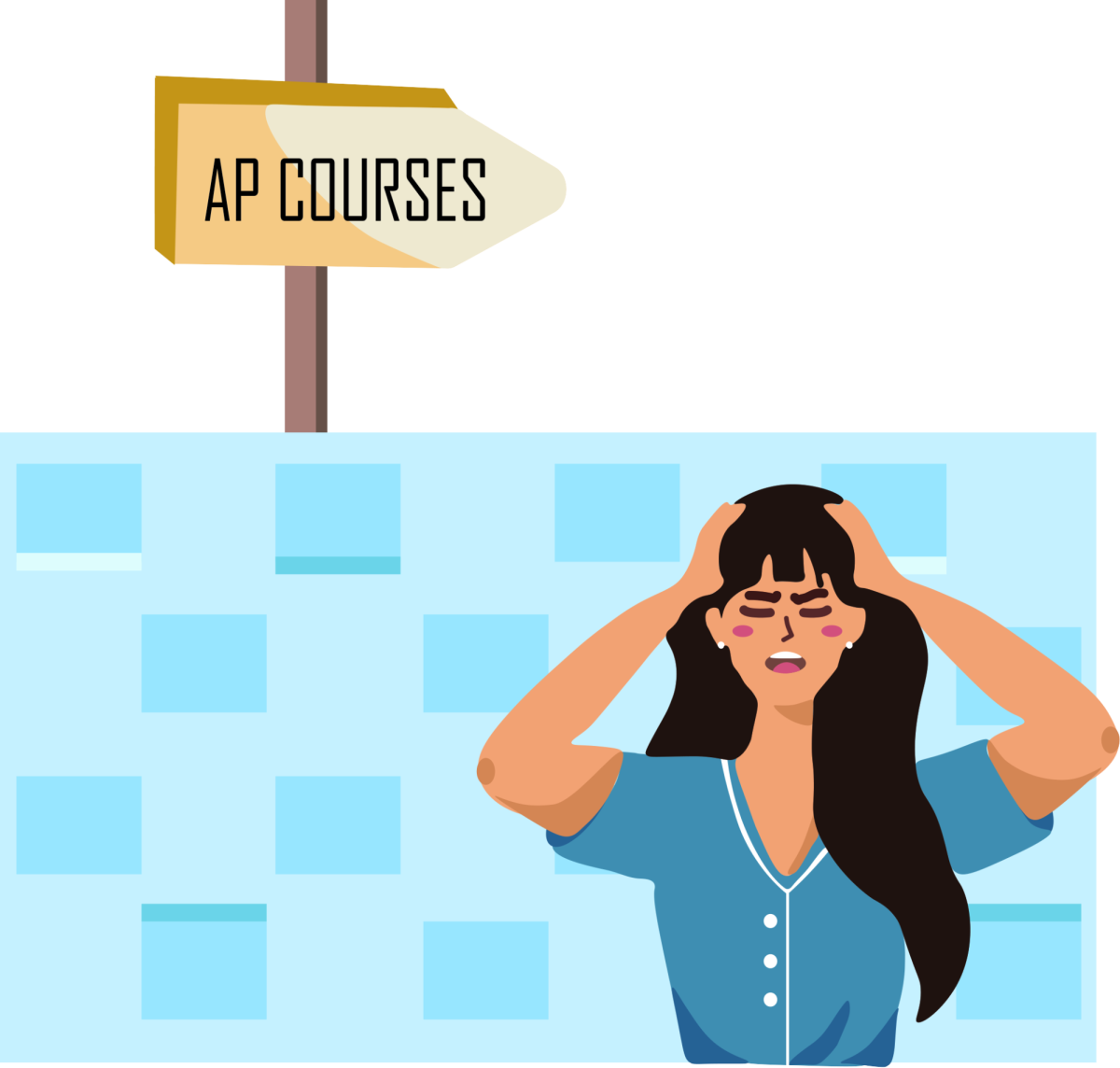On the first day of my first AP class, I sat amongst unfamiliar faces I had never met before. They shouted and laughed across the room harmoniously while I awkwardly let out a few chuckles. I felt a noticeable sense of community that I had missed being a part of, leaving me to feel like an outcast. This created a distinct divide where I was in a classroom with unknown peers, although we all belonged to the class of 2024.
The stark contrast between the lively atmosphere of some of my AP peers and my sense of isolation underscored a broader issue—the limited interactions between students in different academic tracks. Thus, the lack of interaction between students mostly in AP and mostly in college prep courses is a concerning aspect that should be addressed within VHHS to encourage inclusivity at all academic levels.
Maggie Lim (12), a college prep and AP student, explained how the division of academic levels creates friend groups which unintentionally begin to lower the interaction between students in AP and college prep classes.
“Students tend only to choose classes that are within one of each of these class types, and since friend groups tend to be created from how often students see and interact with each other, friend groups are mostly made up of peers within their class type. This results in less interaction between college prep students and AP students,” Lim said.
The repercussions of this lack of interaction are significant. AP and college prep courses can attract students with different academic goals, interests, and skills. While the intention is to provide tailored educational experiences, this inadvertently fosters some isolated communities within the student body, as Lim said.
A student enrolled in several AP classes who wishes to remain anonymous agrees with Lim; they added how limited interactions negatively impact the school culture because students can be divided and polarized, rather than collaborating.
“When we don’t interact with other people outside of our main groups, we tend to think of them as being ‘different’ from us. From both sides, negative assumptions of each other start to form and create a tense, and not-so-welcoming environment that goes against what our school stands for,” they said.
These inaccurate assumptions can form for both AP and college prep, as I have seen while being in both AP and college prep courses. As a college prep student going into AP, a few peers judged and questioned my skills because my schedule wasn’t filled with other AP classes. As an AP student going to college prep, I felt pressured by some of my college prep peers to excel at every little thing.
“AP classes may attract a certain kind of student: one that is assumed to be hardworking, prestigious and feels like they are generally better than people taking [college prep]. On the flip side, people might think that people in college-prep classes don’t care that much about school and academia when this isn’t necessarily true,” the anonymous student said.
To ensure that students who may take numerous AP or college prep courses have the opportunity to interact, a solution is to introduce similar projects or activities that aren’t so drastically different in terms of instructions. Students could be encouraged to collaborate with peers outside their course level.
Emily Mejia (9), a college prep student agrees. She believes that if the courses were less disparate, there would be an opportunity to connect, equally learn from one another, and collectively enhance the high school experience.
In doing this, our school community will be able to engage in collaborative learning experiences, regardless of academic level.

